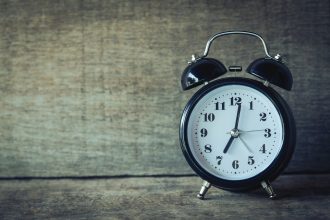January 11, 2010
Wyeth v. Kappos
Wyeth v. Kappos, [2009-1120] (January 7, 2010) [Rader, Plager, and Moore]
In Wyeth v. Kappos the Federal Circuit affirmed summary judgment for Wyeth that the USPTO has been calculating patent term adjustments under 35 U.S.C. § 154 incorrectly, and that Wyeth was entitled to an additional 294 days adjustment for U.S. Patent No. 7,179,892 and an additional 386 days adjustment for U.S. Patent No. 7,189,819.
When the U.S. went to a twenty year patent term, 35 U.S.C. § 154 provided certain patent term guarantees. § 154(b)(1)(A) provides patent term adjustments in the event of USPTO delays in acting – the “A Adjustment,” and § 154(b)(1)(B) provides patent term adjustment if the application is pending more than three years – the “B Adjustment.” § 154(b)(2)(A) provides that to the extent the delays overlap, the adjustment should not exceed the actual delay. A recent patentlyo.com study found that more than 75% of patents issued over the past four years were awarded additional patent term. Looking at the 3,187 utility patents issued on January 12, 2010, patentlyo found that 80% were awarded additional patent term, the average adjustment being 14.5 months and the longest being more than six years for U.S. Patent No. 7,647,402, which would be extended almost two additional years under Wyeth.
The USPTO construed § 154(b)(2)(A) to mean that the patentee gets the longer of the A Adjustment or the B Adjustment, while Wyeth contended that the applicant gets both the A Adjustment and the B Adjustment less the time that these adjustments overlap (i.e., the amount of A Adjustment occurring more than three years after the filing date). § 154(b)(1)(C) provides for a reduction of the adjustment for applicant-caused delays.
To illustrate the difference, Wyeth’s U.S. Patent No. 7,179,892 had 610 days of A Adjustment (51 of which occurred more than three years after the application was filed) and 345 days of B Adjustment, and 148 days of applicant-caused delay. Using its greater of A or B construction, the USPTO calculated the adjustment as the 610 days of A Adjustment, less the 148 days of applicant-caused delay, or 462 days; while Wyeth calculated the adjustment as the 610 days of A Adjustment plus the 345 days of B adjustment less the 51 days that the A Adjustment overlapped the B Adjustment and less the 148 days of applicant-caused delay, or 756 days.
As a matter of pure statutory construction, the district court agreed with Wyeth’s interpretation of § 154, as did the Federal Circuit.
In response to the decision, the USPTO announced an interim procedure for requesting a patent term adjustment recalculation:
WASHINGTON (January 28, 2010) – The Commerce Department’s United States Patent and Trademark Office (USPTO) is providing patentees with the ability to request a recalculation of their patent term adjustment without a fee or petition as is normally required pending completion of necessary modifications to the USPTO’s computer program for calculating patent term adjustments. The agency expects to complete by March 2, 2010, the software modification necessary to comply with the U.S. Court of Appeals for the Federal Circuit’s recent decision in Wyeth v. Kappos regarding the overlapping delay provision of 35 USC 154(b)(2)(A). In the meantime, the USPTO will be processing recalculation requests under an interim procedure that is available to a patentee whose patent issues prior to March 2, 2010, and who requests it no later than 180 days after the issue date. This procedure is available only for alleged errors in calculation that are specifically identified in Wyeth. A copy of the notice submitted to the Federal Register for publication and the form for patentees to use in requesting a recalculation of patent term is on the USPTO Web site at http://www.uspto.gov/patents/announce/pta_wyeth.pdf.
“The USPTO is working to modify its computer program to comply with the Federal Circuit’s decision as soon as possible,” said Commissioner for Patents Robert Stoll. “Until then, this interim procedure will enable patentees to request a recalculation quickly and at no charge.”
An applicant is entitled, subject to certain conditions and limitations, to patent term adjustment if (1) the USPTO fails to take certain actions during the examination and issue process within specified time frames; (2) if the USPTO fails to issue a patent within three years of the actual filing date of the application; and (3) for delays due to interference, secrecy order, or successful appellate review.
***
[F]or patents issuing on or after March 2, 2010, a patentee who believes that the patent term adjustment calculation for his or her patent is not correct must file a request for reconsideration under 37 CFR 1.705(d) that complies with the requirements of 37 CFR 1.705(b)(1) and (b)(2) within two months of the date the patent issued.
***
Patentees are reminded that [the interim procedure] is an optional procedure, and that any patentee who wishes to preserve his or her right to review in the United States District Court for the District of Columbia of the USPTO’s patent term adjustment determination must ensure that he or she also takes the steps required under 35 U.S.C. 154(b)(3) and (b)(4) and 37 CFR 1.705 in a timely manner.
What to do:
(1) Any applicant who has an original, allowed application that has been pending for more than three years (i.e., potentially has both A Adjustments and B Adjustments) should double check the USPTO’s patent term adjustment calculation, and consider filing a request for reconsideration under the USPTO’s interim procedure or 35 U.S.C. § 154(b)(3)(B)(ii) and 37 C.F.R. § 1.705(a-c) if the USPTO was incorrect.
(2) Any patentee whose patent issued in the last six months, on an original application that was pending for more that three years, should double check the USPTO’s patent term adjustment calculation, and consider filing a request for reconsideration under the USPTO’s interim procedure or 37 C.F.R. § 1.705(d) (due two months after issuance) or an appeal under 35 U.S.C. § 154(b)(4)(A) (due six months after issuance), if the USPTO was incorrect.
(3) It is unclear whether a patentee whose patent issued more than six months ago has any remedy, but if an increase in the patent term would be valuable, there are a number of possibilities to explore, including a Certificate of Correction, a Reissue, and even a Petition to the Commissioner for waiver or suspension of the rules.
Other things to look for: PCT applicants who enter the National Phase in the U.S. should watch the USPTO closely. B Adjustment is defined as the failure to issue a patent “within 3 years after the actual filing date of the application in the United States.” The Patent Office has been measuring this date from the entry into the national phase, not the filing of the PCT application designating the U.S (which under the PCT Treaty is supposed to have the same effect as an application filed in the U.S.), and this interpretation might also be subject to challenge.




































